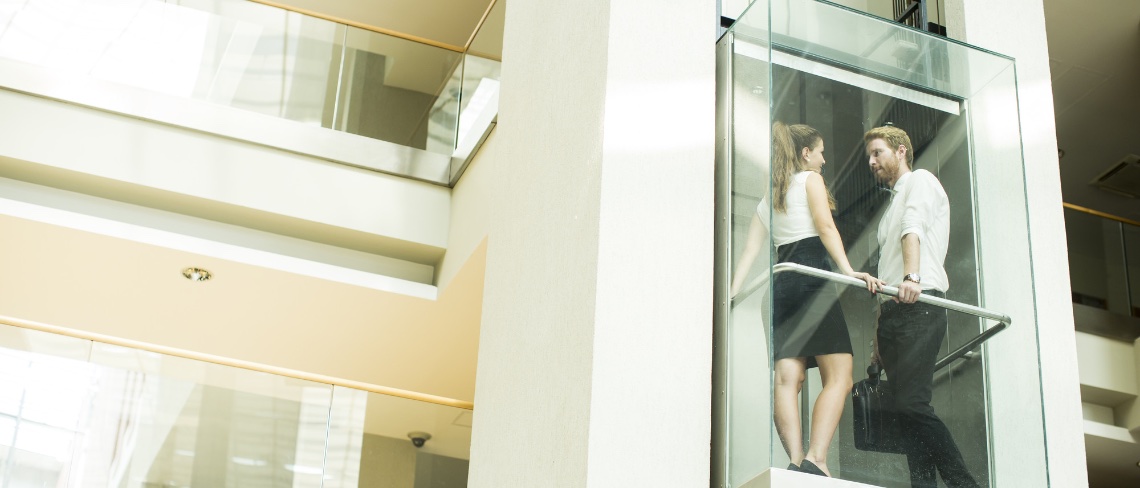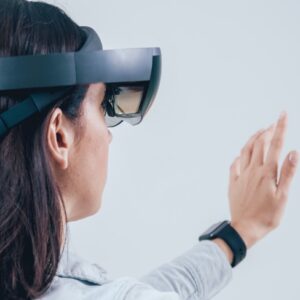To improve the accessibility of our content, please find the audio version of this blog post.
In a study published in 20141, researchers in Toronto, Canada, found that hospital elevator buttons were significantly more likely to test positive for staphylococcus, streptococcus, and coliform bacteria than the public toilets at those same hospitals. It is essential not to be alarmist as most bacteria detected had low pathogenicity. However, it should give pause the next time someone is wondering what floor to select. It also makes the UVPANEL elevator by UVENTIONS even more critical. The panel, mounted on the ceiling of hospital elevators, is the first to automate an ultraviolet-C disinfection process.
Table of Contents
UVPANEL: The Challenge of using UV-C
Why Does Germicidal Irradiation Work?
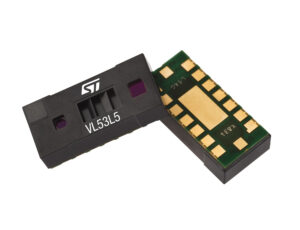
The UVPANEL houses three VL53L5CX time-of-flight sensors and two STM32 microcontrollers. They work together to automatically determine how much UV-C light an elevator cart will require and for how long. The time-of-flight sensors send lasers and wait for them to come back. If there’s an object or person nearby, the light will bounce back. The sensors then compute how long the photons take to return to determine if people or things are in the elevator. UVENTIONS then uses an STM32H733ZG to process data from the sensors, map the elevator, and decide whether it is safe to turn on the ultraviolet lights.
The idea of blasting UV-C light on a surface for sanitation purposes is not new. The global pandemic led to the popularization of home UV-C lamps. Consumers put their phone, toothbrush, and more inside a box containing the lights and press a button to start the disinfection cycle. In a nutshell, germicidal irradiation takes advantage of the light’s wavelength. The ultraviolet C spectrum, which sits between 100 and 280 nanometers, is so short that it can damage the bacteria’s DNA. As a result, the organism can no longer reproduce and or contaminate its host.
Why Is Germicidal Irradiation Complex?
The problem with traditional UV-C sanitation is that it necessitates a proper adjustment of the amount of light and the duration of the blast. Indeed, failing to send enough radiation means that the light doesn’t affect the bacteria enough to make a difference. As a result, properly disinfecting all surfaces in a hospital elevator can be daunting. Engineers must determine the dimensions of the cart then customize the amount of UV-C light and its duration. The need to customize every setup is, however, cost-prohibitive. As a result, UVENTIONS needed to find a way to automate the process.
The other critical consideration pertains to safety. To protect the public from the harmful effects of UV-C, manufacturers must implement reliable safeguards. For instance, most home appliances turn the UV-C lamps off when the user opens an enclosure. In the case of the UVPANEL, UVENTIONS had to create a system that would shut off the radiation process as soon as the doors opened. It had to be extremely quick and foolproof. Moreover, the system must fit within the UVPANEL to avoid blowing up costs or slowing installation operations.
UVPANEL: The Solution to Automatic UV-C Disinfection
Mapping the Elevator
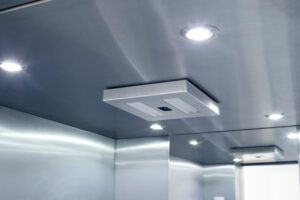
To solve the problem of determining the elevator cart’s dimensions, UVENTIONS turned to ST time-of-flight sensors. Initially, the company used ten VL53L1s on its prototype. The reason was that it would provide a detailed picture and offer redundancy. Indeed, using multiple sensors to measure the same surface ensures data accuracy. The VL53 family of devices is also much more cost-effective than most competing solutions.
However, UVENTIONS still had to face cost issues that made the UVPANEL difficult to manufacture despite all these advantages. Coincidentally, as the global pandemic was slowing progress on the panel, ST released the VL53L5CX, which we just opened up at IEEE Sensors 2021. Thanks to its much wider field of view (63º instead of 27º), the company only needed three time-of-flight sensors instead of ten and was able to use them in their final design.
As Daniel Ehlers, Chief Executive Officer and Co-Founder at UVENTIONS, and Axel Großklaus, its Chief Technical Officer and Co-Founder explained:
“The VL53L5CX was the right fit for us [UVENTIONS]! Our application benefited from the wider field of view and the flexible refresh rate. As a result, we monitor 64 independent zones at 15 Hz to boost accuracy and benefit from some redundancy. One sensor checks the central part of the cabin while the other two are at an angle. As a result, it can detect if one or more persons or objects are inside the elevator and for how long. The system also doubles as a monitoring tool. If someone collapsed or left a nefarious package, the UVPANEL could send an alert to notify security personnel.”
Protecting the Public
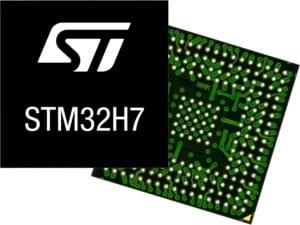
As we already saw, safety is another critical aspect of automatically disinfecting surfaces with UV-C light. The ToF sensors help with people and object detection. Additionally, UVENTIONS uses ST’s LIS2DH12 high-performance 3-axis accelerometer to determine if the elevator is moving or its doors are opening. As such, the system can stop the elevator’s irradiation as soon as someone is about to enter. It can also predict when people will get in or out of the cart. Put simply, the accelerometer is fast and precise enough to shut off the UV-C lights rapidly and protect the public.
The system is thus a great example of how to simplify a design. Technically, UVENTIONS could use the ToF sensors to detect the doors opening and closing. However, it would require a completely different application with its set of challenges. Indeed, detecting the presence of persons or objects is very different from determining if doors are moving. Too often, engineers don’t realize that it’s easier to use another type of sensor. In this instance, the company distinguished itself by recognizing that using a motion sensor would simplify its approach and shorten the time to market.
Securing the UVPANEL Elevator
Given the extremely sensitive nature of the application, the company focused on protecting its code from day one. It’s the reason why the PCB has two STM32 microcontrollers. The STM32H7 hosts the application that runs the lights and sensors. It is segregated from the rest of the system and only accessible through a USB or SWD port. On the other hand, the STM32L5 and STSAFE-A110 securely connect to a cloud through a Bluetooth or Ethernet gateway. UVENTIONS even included an over-the-air update mechanism to facilitate patch deployments. The code running on the STM32L5 can thus send alerts, status updates and offer greater accessibility to the UVPANEL without jeopardizing the UV light controller.
The Challenge of Moving Forward in an Untested Market
UVENTIONS continues to work on its UVPANEL and the larger subject of UV-C disinfection. Their teams understand that hospitals require incredibly high levels of hygiene with a reduction of germs by a factor of 1/104. As a result, the company is working with an accredited German microbiological laboratory to experiment under different conditions. The company should have results by the end of the year, which will help contribute to the field of UV-C sanitation at large. Indeed, while disinfecting with ultraviolet-C lights is increasingly common, there’s still a lot of research needed to understand better the amount of light and time required for specific cases.
UVENTIONS is also collaborating with local hospitals to understand their needs better. Indeed, since this is a nascent use case, the current UVPANEL will help shape the next generation of features to serve healthcare providers better. Hence, the company shared how they use ST microcontrollers and sensors to build a platform that can adapt to future findings. Using components with enough memory, power, and accuracy was critical to account for future changes. UVPANEL is thus a testament to the benefits of working closely with a device maker to find long-term solutions that can improve people’s lives in a meaningful way.
- Kandel CE, Simor AE, Redelmeier DA. Elevator buttons as unrecognized sources of bacterial colonization in hospitals. Open Med. 2014;8(3):e81-e86. Published 2014 Jul 8. ↩︎


